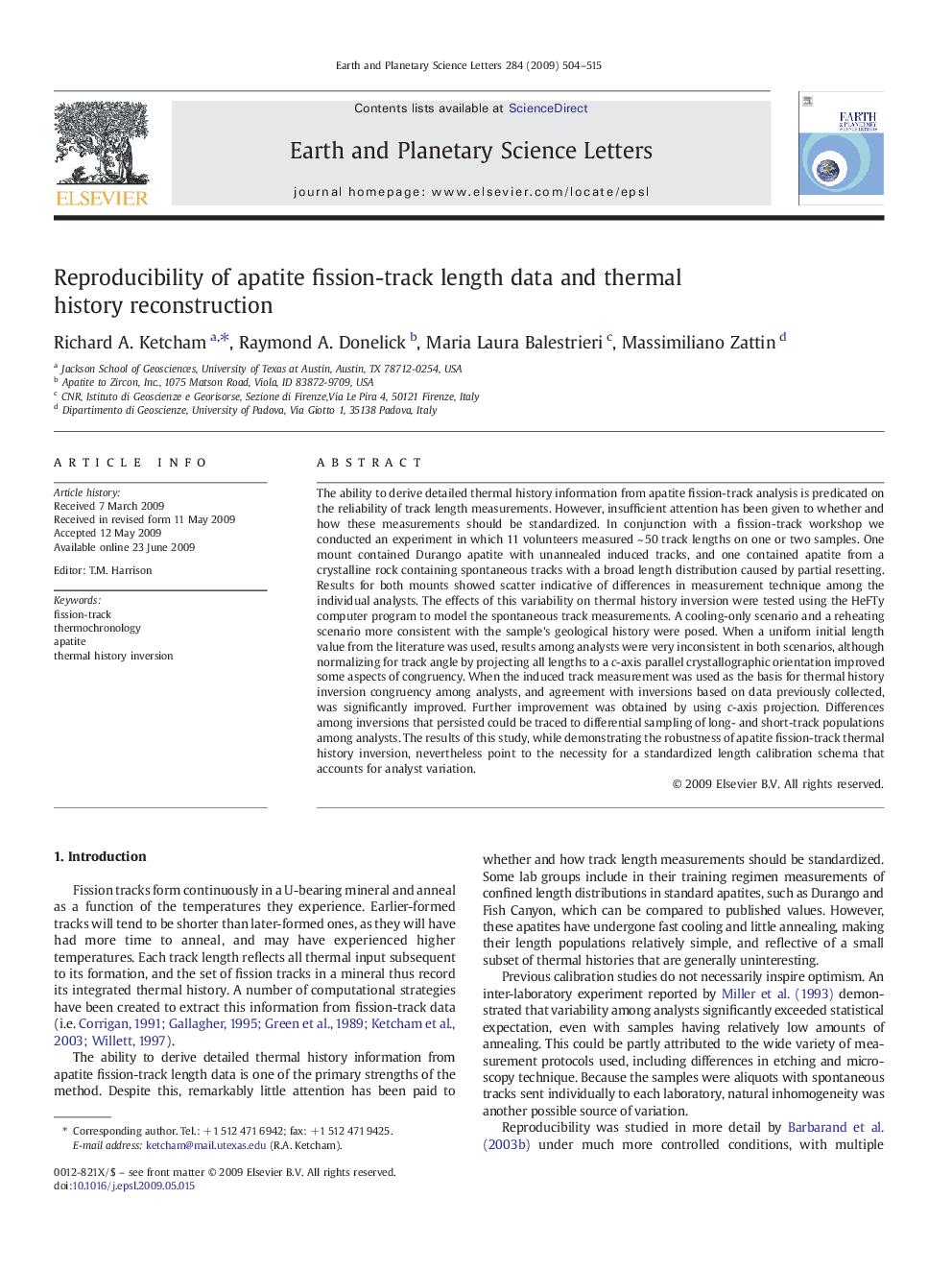| Article ID | Journal | Published Year | Pages | File Type |
|---|---|---|---|---|
| 4679002 | Earth and Planetary Science Letters | 2009 | 12 Pages |
The ability to derive detailed thermal history information from apatite fission-track analysis is predicated on the reliability of track length measurements. However, insufficient attention has been given to whether and how these measurements should be standardized. In conjunction with a fission-track workshop we conducted an experiment in which 11 volunteers measured ~ 50 track lengths on one or two samples. One mount contained Durango apatite with unannealed induced tracks, and one contained apatite from a crystalline rock containing spontaneous tracks with a broad length distribution caused by partial resetting. Results for both mounts showed scatter indicative of differences in measurement technique among the individual analysts. The effects of this variability on thermal history inversion were tested using the HeFTy computer program to model the spontaneous track measurements. A cooling-only scenario and a reheating scenario more consistent with the sample's geological history were posed. When a uniform initial length value from the literature was used, results among analysts were very inconsistent in both scenarios, although normalizing for track angle by projecting all lengths to a c-axis parallel crystallographic orientation improved some aspects of congruency. When the induced track measurement was used as the basis for thermal history inversion congruency among analysts, and agreement with inversions based on data previously collected, was significantly improved. Further improvement was obtained by using c-axis projection. Differences among inversions that persisted could be traced to differential sampling of long- and short-track populations among analysts. The results of this study, while demonstrating the robustness of apatite fission-track thermal history inversion, nevertheless point to the necessity for a standardized length calibration schema that accounts for analyst variation.
